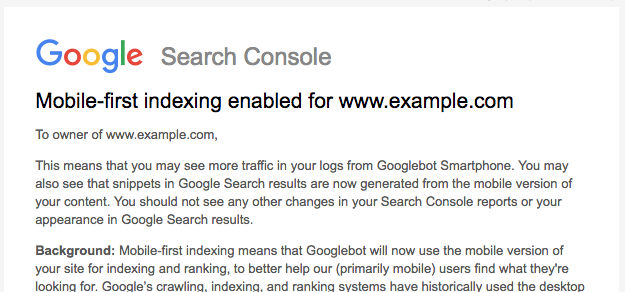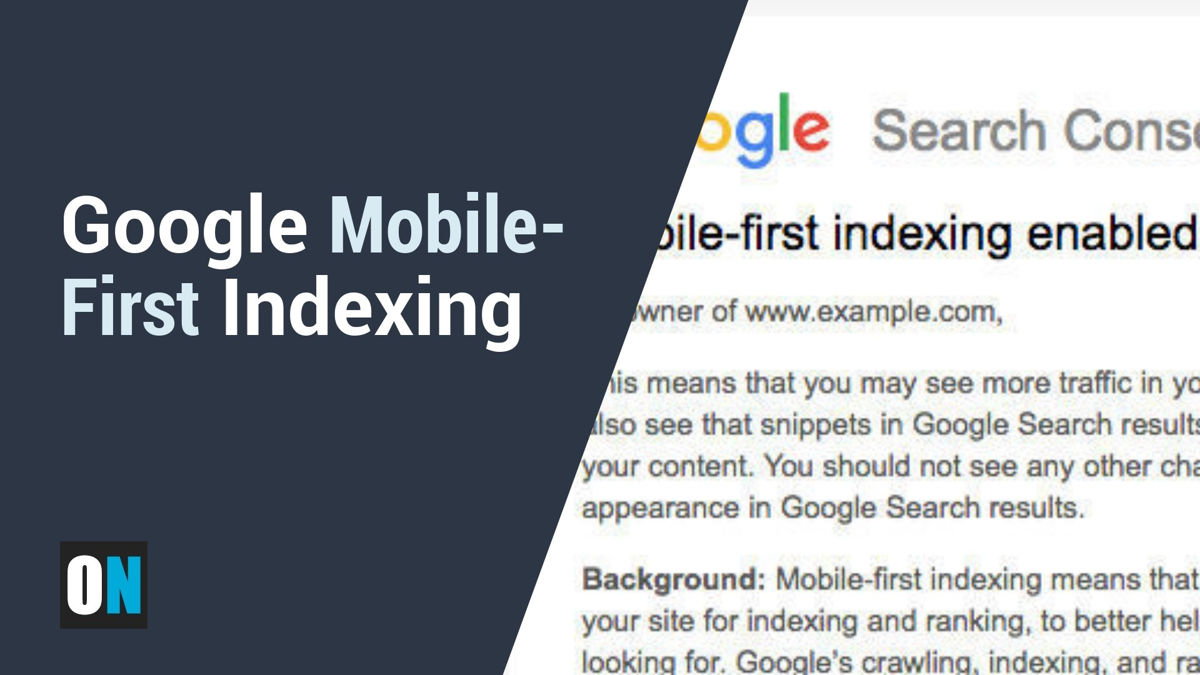The internet is dynamic as hell.
The day you rest on your laurels is the day your competitor speeds past you laughing.
Google’s mobile-first index will weed out the lazy, and reward the Nostradamus-types…well kinda.
What Is Google Mobile First Indexing
Google’s Mobile-First Index is when Google uses the mobile version of your website’s content indexing and ranking.
In other words, your mobile version is what matters now.
Before, Google would index the desktop version of your content when trying to figure out the relevance of someone’s query, but now due to the high usage of mobile devices, Google’s decided that it is better to crawl, index, and rank the pages using a smartphone user agent instead.
How To Enable Mobile First Indexing
Hopefully you have your website added to Google Search Console (GSC) to make this easier.
In order to enable mobile first indexing, there’s nothing you have to do, as Google will send you a notification letting you know that mobile-first indexing has been enabled on your website property.
Then, once you log into your GSC, you’ll see a notification that says “Mobile first indexing enabled for [your domain]”.
Here’s how it should look:

How To Disable Mobile-First Indexing
Unfortunately, Mobile-first indexing is an algorithmic update on how Google indexes websites.
Their index, their rules.
Nothing you can do.
How Does Mobile-First Indexing Work And How Does It Impact SEO?
There are a few ways that mobile first indexing affects SEO. I’ll just go over one of them.
Time & Device Based User Intent
One of the ways that this algorithm tries to predict what type of content people are searching for based on their device during specific times of the day.
Example 1
For example, during a Tuesday at 9:00am, you’re at the office hating life and most likely using your desktop computer. The intent of what your searching for and where you’re searching from is wildly different than if you are out a bar on Friday night slamming down shots and telling the world about it.
Example 2
Another example is during work-week lunch hours.
Most people have their head stuffed in their phones reading Facebook, news, etc. Your intent is most likely to look like you’re busy so you can inhale your lunch and not have to talk to anyone. (God forbid we’re normal for a change.)
So if your website has long form content, diagrams, maps, tables, you may rank better during times that Google thinks you’re wanting to see that type of stuff.
If you have short form content, lots of gifs, meme-magic, etc, Google may serve up your website during Friday/Saturday nights more.
Their whole goal is to satisfy a user’s intent based on the time of day.
Long story short, they’re tracking you more and putting the trillions of dollars that they have invested in their data centers to good use.
Is Mobile First Indexing a Good Thing?
Well, this can be broken down into lots of different segments, so let’s stick with the basics.
How it Affects the Masses
They won’t know what’s happening, but will give tons of free data to Google.
How it Affects SEO Clients
They’ll freak out as usual.
How it Affects SEO’s
We’ll have to work harder and dig further to try and give Google what they want.
In other words, making sure client website load times are fast, arrange how mobile content is displayed (tabs, etc), structured markup is implemented to take advantage of precious SERP real esate.
How it Affects Google
They’ll be able to charge advertisers more based on the free data the masses will give them.
Bottom Line for Mobile-First Index
Make sure to adapt to Google’s changes if you want to thrive in the SEO game.

